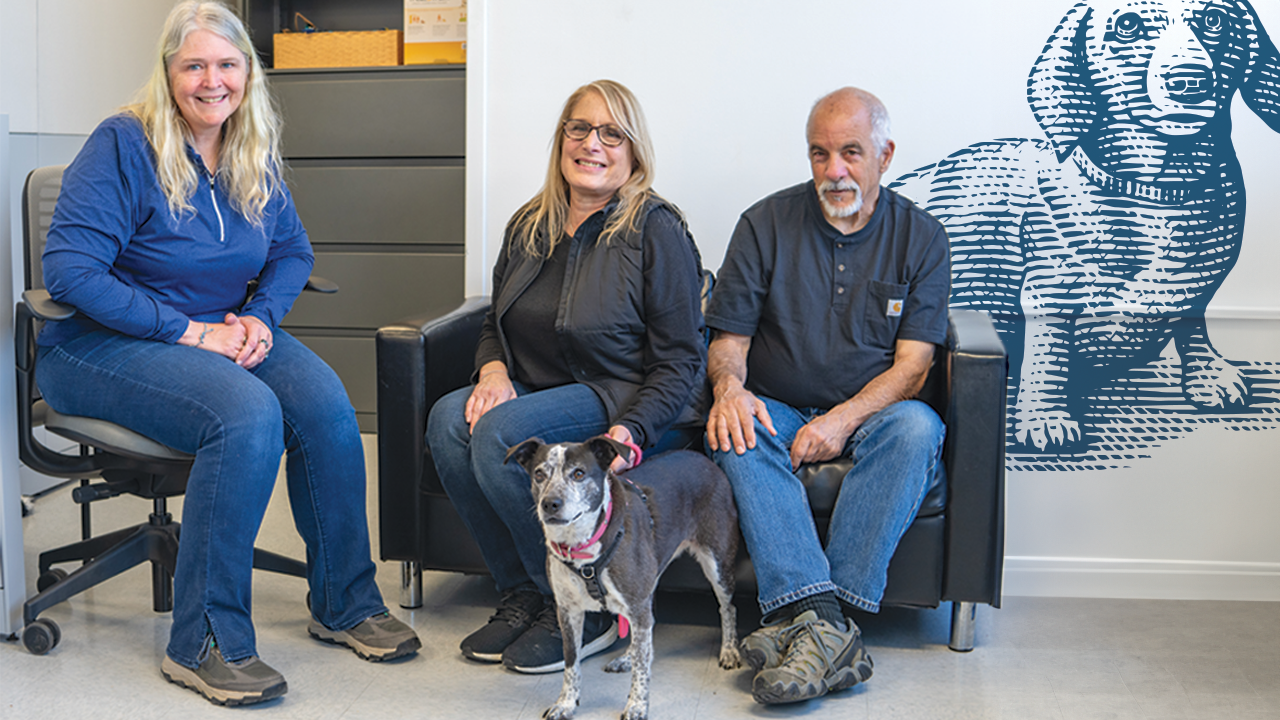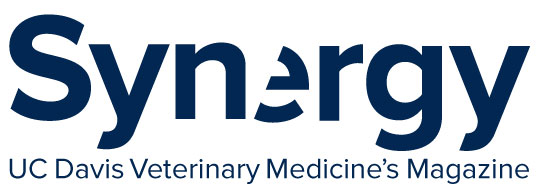
Veterinary Medical Center
Nutrition and Behavior Optimize Services

utrition and Behavior Services are clinical specialties that can impact every pet. Because their success comes mostly through communication rather than technical procedures like surgeries, the working environments of these two services require unique spaces. So, they were given new areas in the hospital to maximize their patient impact.
Nutrition

The Nutrition Service now encompasses five rooms on the second floor of the Veterinary Medicine II building of the hospital complex. The new areas include a dedicated technician office/workspace, clinical teaching space, kitchen, food storage, and an examination room.
Previously located near the wards, the service previously prepared food for hospitalized patients. Now, trained ward technicians handle the more common and popular foods served to patients as well as the administrative tasks related to those feedings, freeing time for Nutrition Service technicians to focus on scheduling appointments, client follow-up, and communication with referring veterinarians.
With a crowded appointment schedule nearly every week, the service welcomes the additional space.
With a crowded appointment schedule nearly every week, the service welcomes the additional space, as it is back to full clinician capacity for the first time in years. Four veterinarians (one faculty, one staff, one fellow, and one resident) and two technicians are now available to assist clients more efficiently and with better turnaround time.
Another element of the increased space is the ability to take on more DVM students.”
—Dr. Jennifer Larsen, Chief of Service
“Another element of the increased space is the ability to take on more DVM students,” said Chief of Service Dr. Jennifer Larsen. “Nutrition is an elective student rotation, but a popular one.”
Nestlé Purina has been a valued partner of the Nutrition Service for many years, generously donating funds to construct its previous and new kitchens, as well as financially supporting one of its veterinary technician positions. While Nestlé Purina is a partner, the service stocks all brands and diets to provide the best fit for each patient.
Behavior

A new suite in the Health Sciences District adjacent to the hospital has been the home of the Behavior Service since the summer of 2023. It is divided into two larger examination rooms, a student rounds/study room, and faculty office space.
Being slightly removed from the main hospital building, their new space offers a quieter environment for anxious animals than the previous examination area, where those patients sometimes encountered other animals throughout the hospital.
The physical environment also addresses an important aspect of student well-being.
“Keeping students safe is of paramount concern at the school, especially as they observe and participate in appointments,” said Dr. Liz Stelow, chief of Behavior. “The new suite addresses that, as it allows for a more advantageous clinical setting when proper space needs to be given for a dog that is being seen for biting or other potentially dangerous behaviors.”
Keeping students safe is of paramount concern at the school, especially as they observe and participate in appointments.”
—Dr. Liz Stelow, Chief of Behavior
The service’s full appointment schedule may see four students participating in one patient visit, something nearly impossible in their much smaller previous examination rooms. While the new space is fully functional, additional buildout of the suite and the Health Sciences District in general is planned for the near future.
